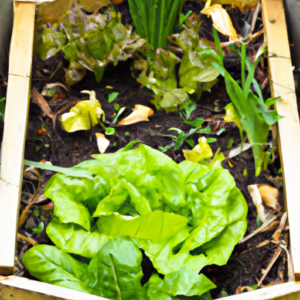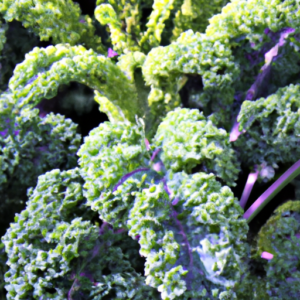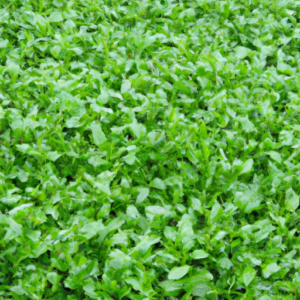In this article, you will discover the secrets of successfully growing peppers in your own backyard. Whether you’re a seasoned gardener or just starting out, this guide will provide you with all the essential steps and tips to cultivate a vibrant pepper plant. From selecting the right varieties to providing the ideal growing conditions, you’ll soon be able to enjoy the bountiful harvest of fresh, flavorful peppers straight from your garden. Get ready to unleash your green thumb and embark on a pepper-growing adventure!
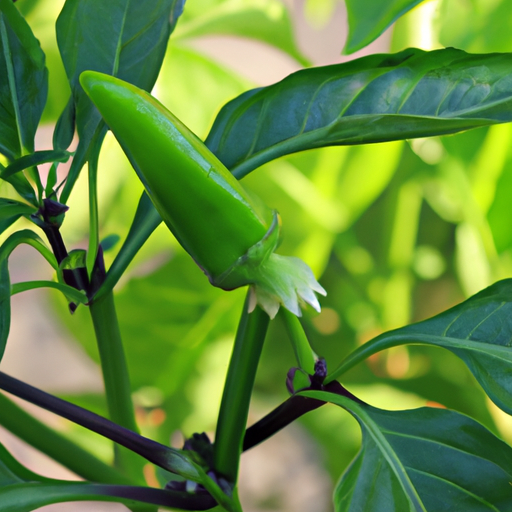
Selecting Pepper Varieties
Determining the level of heat
When selecting pepper varieties, one of the first considerations you’ll need to make is the level of heat you prefer. Peppers can range from mild to extremely hot, so it’s important to determine the level of heat that suits your taste buds. If you enjoy a little kick without too much heat, opt for bell peppers or less spicy chili peppers. On the other hand, if you like your peppers to pack a punch, try jalapenos, serranos, or habaneros. It’s also helpful to consider the Scoville scale, which measures the heat of peppers. This scale can give you a better idea of the specific level of heat each variety offers.
Considering size and shape
Apart from heat, the size and shape of peppers is another factor to consider when selecting varieties. Peppers come in various sizes and shapes, from small and round to long and cylindrical. Bell peppers, for example, are typically larger and have a blocky shape, while chili peppers are generally smaller and pod-shaped. Consider the intended use of the peppers in your cooking to determine which size and shape will be most convenient for you. Keep in mind that larger peppers may take longer to ripen and mature.
Choosing between sweet or hot peppers
Another important decision to make when selecting pepper varieties is whether you prefer sweet or hot peppers. Sweet peppers, such as bell peppers, have a mild, sometimes slightly tangy flavor, and are perfect for salads, stir-fries, and stuffing. Hot peppers, on the other hand, add spice and depth to dishes, and can range from mildly hot to intensely fiery. Make sure to consider your tolerance for spiciness and your intended culinary uses when choosing between sweet and hot peppers. It’s also worth noting that some pepper varieties, like the poblano pepper, offer both sweet and hot options, making them a versatile choice for your garden.
Preparing Soil
Testing soil pH
Before planting your pepper seeds or seedlings, it’s important to test your soil’s pH level. Pepper plants thrive in a slightly acidic to neutral pH range of 6.0 to 7.0. Testing your soil will give you a better understanding of its acidity or alkalinity and provide insights into any necessary soil amendments. You can easily find soil testing kits at your local garden center or use a professional soil testing service for more accurate results. If your soil pH is outside the optimal range for peppers, you’ll need to make the necessary adjustments to create a favorable growing environment.
Amending soil with organic matter
To ensure your peppers have the best possible growing conditions, it’s essential to amend your soil with organic matter. Compost, well-rotted manure, or other organic materials help improve soil structure, promote drainage, and provide essential nutrients. Before planting, work these amendments into the soil to a depth of 8 to 12 inches. This will help create a nutrient-rich and well-aerated soil environment that peppers thrive in. Remember to avoid over-amending the soil, as it can lead to nutrient imbalances.
Ensuring proper drainage
Good drainage is crucial for healthy pepper plants. Peppers prefer well-draining soil to prevent waterlogged roots, which can lead to root rot and other diseases. To ensure proper drainage in your pepper bed, choose a site that is not prone to standing water or flooding. If your soil has poor drainage, you can improve it by adding organic matter, like compost, to increase its overall water-holding capacity. Additionally, you can consider building raised beds to enhance drainage and control moisture levels more effectively. Proper drainage is key to giving your pepper plants the best chance of thriving.
Starting Seeds
Gathering supplies
To start your pepper plants from seeds, gather the necessary supplies beforehand. You’ll need seed trays or containers, seed starting mix, labels, water, and of course, pepper seeds of your chosen varieties. It’s important to choose high-quality, fresh seeds from reputable sources to ensure strong and healthy seedlings. Seed trays or containers should have drainage holes at the bottom to prevent waterlogging. Additionally, labels will help you keep track of different pepper varieties as they grow.
Sowing seeds indoors
Once you have your supplies ready, it’s time to sow the pepper seeds indoors. Fill the seed trays or containers with a high-quality seed starting mix, leaving a small space at the top for watering. Sow the seeds according to the recommended depth on the seed packet, usually around ¼ inch deep. Lightly cover the seeds with more seed starting mix, mist the soil surface with water to moisten it, and place a clear plastic cover or plastic wrap over the trays to create a greenhouse-like environment. This will help retain moisture and promote seed germination.
Providing adequate light and warmth
After sowing the seeds, it’s crucial to provide them with adequate light and warmth for successful germination. Place the seed trays or containers in a warm area with consistent temperatures around 70 to 80 degrees Fahrenheit. You can use a heating mat specifically designed for seed starting to maintain a constant temperature. Additionally, ensure that the seeds receive ample light by placing them near a south-facing window or using fluorescent grow lights. The seedlings should receive around 14 to 16 hours of light per day to encourage healthy growth.
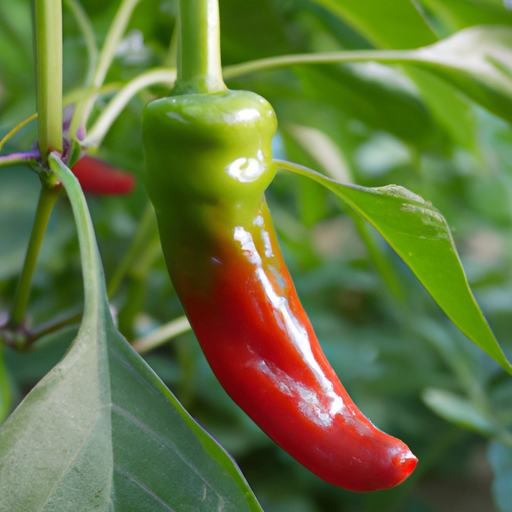
Transplanting Seedlings
Hardening off seedlings
Before transplanting your pepper seedlings outdoors, you’ll need to gradually acclimate them to the outdoor conditions. This process is known as “hardening off” and helps seedlings transition from the controlled environment indoors to the unpredictable outdoor elements. Start by placing your seedlings outside for a few hours each day, gradually increasing the time over a week or two. This exposure helps the seedlings adjust to direct sunlight, wind, and temperature fluctuations. It’s important to protect them from extreme conditions during this period to prevent stress or damage.
Selecting ideal planting location
Choosing the right planting location is crucial for the success of your pepper plants. Pepper plants thrive in full sun, requiring a minimum of 6 to 8 hours of direct sunlight each day. Select a location that is sheltered from strong winds, as they can damage fragile pepper plants. Ensure the soil in the chosen area has proper drainage, as mentioned earlier, to prevent waterlogged roots. Additionally, consider planting peppers near taller plants or structures to provide some shade during the hottest parts of the day, especially in regions with scorching summers.
Digging proper planting holes
When transplanting your pepper seedlings, it’s essential to dig proper planting holes to provide them with enough space for healthy growth. Dig holes that are slightly larger than the root ball of the seedling, usually around 2 to 3 times wider. Ensure the holes are deep enough to accommodate the seedling at the same depth it was growing in the container. Gently remove the seedling from its container, plant it in the hole, and backfill with soil, pressing it lightly to eliminate any air pockets. Water the seedlings thoroughly after transplanting to settle the soil around the roots.
Watering and Fertilizing
Establishing watering routine
Proper watering is crucial for pepper plants, as both overwatering and underwatering can lead to various problems. To establish a watering routine, check the moisture level of the soil regularly. Stick your finger about an inch into the soil, and if it feels dry, it’s time to water your peppers. However, if the soil feels slightly moist, hold off on watering for another day or two. Avoid letting the soil completely dry out or become saturated. Consistency is key, so try to water your peppers at the same time each day, preferably in the morning, to allow any excess moisture to evaporate during the day.
Determining watering needs
The watering needs of pepper plants can vary depending on factors such as weather conditions, soil type, and stage of growth. Generally, peppers require about 1 to 1.5 inches of water per week, including rainfall. However, during hot and dry periods, they may need more frequent watering. Observing the condition of the plants is also important – if they start to wilt, it’s a sign that they need water. Remember that peppers are sensitive to excessively wet conditions, so it’s crucial to maintain a balance and avoid waterlogging the soil.
Choosing appropriate fertilizer
Pepper plants require a balanced and nutrient-rich soil to thrive. When it comes to fertilizing, it’s important to choose an appropriate fertilizer that provides essential nutrients for peppers’ specific needs. Look for a balanced granular fertilizer with equal parts nitrogen (N), phosphorus (P), and potassium (K). Nitrogen promotes leafy growth, phosphorus encourages healthy root development and flowering, and potassium aids in overall plant health and fruit production. Always follow the fertilizer manufacturer’s instructions regarding application rates and frequency. It’s also worth considering organic fertilizers, which provide nutrients gradually and improve the long-term health of the soil.
Pruning and Supporting Plants
Pinching off lateral shoots
To promote healthier and more productive pepper plants, it’s recommended to pinch off lateral shoots, also known as suckers, that develop between the main stem and the leaves. These shoots compete for nutrients and energy, diverting resources that could be better utilized for fruit production. Gently pinch or snap off these side shoots with your fingers when they are small, preferably when they are around 2 inches long. Regularly removing lateral shoots will encourage the plant to focus its energy on producing larger, more flavorful peppers.
Staking or caging plants
Pepper plants can become top-heavy as they mature and develop fruit, which can cause the stems to bend or break under their weight. To support your pepper plants and prevent such damage, consider staking or caging them. Staking involves inserting a sturdy stake in the ground near the plant and tying the main stem to the stake using soft plant ties or garden twine. This method provides support to keep the plant upright. Alternatively, you can use wire cages made specifically for peppers or create homemade cages using wire mesh. Caging allows the plant to grow through the openings while providing support from all sides.
Trimming diseased or damaged foliage
Regularly inspect your pepper plants for any signs of disease or damage. If you notice any diseased or damaged foliage, it’s important to trim it off promptly. Removing affected leaves and stems helps prevent the spread of diseases and allows the plant to focus its energy on producing healthy new growth. Use sterilized pruners or scissors to make clean cuts, ensuring that you don’t accidentally damage healthy parts of the plant. Proper pruning and removing diseased or damaged foliage can help maintain the overall health and vitality of your pepper plants.
Preventing Common Pests and Diseases
Identifying common pepper pests
Pepper plants can fall victim to various pests, including aphids, spider mites, thrips, and whiteflies. These pests can cause damage to leaves, flowers, and fruits, ultimately impacting the overall health and productivity of your plants. Regularly inspect your pepper plants for signs of infestation, such as distorted leaves, yellowing, or webbing. If you notice any pests, it’s important to take immediate action to prevent their population from increasing. You can use natural pest control methods like releasing beneficial insects such as ladybugs or lacewings, or you can make homemade insecticidal sprays using ingredients like garlic, neem oil, or insecticidal soap.
Using organic pest control methods
Organic pest control methods offer a safe and eco-friendly approach to protect your pepper plants from harmful pests. Beneficial insects like ladybugs, lacewings, and praying mantises can be introduced into your garden to feed on aphids and other pests. Additionally, you can create insect barriers using fine mesh netting or row covers to physically prevent pests from reaching your plants. Homemade insecticidal soaps or neem oil sprays can be effective against pests like aphids and spider mites. Remember to follow the instructions carefully to avoid harming beneficial insects or your pepper plants.
Implementing proper sanitation practices
Maintaining proper sanitation practices in your pepper garden plays a crucial role in preventing the development and spread of diseases. Remove and destroy any fallen leaves or vegetation debris, as they can harbor pests and diseases. Avoid overhead watering, as it can create a humid environment that favors disease development. Instead, water at the base of the plant to keep the foliage dry. Regularly clean and sterilize your gardening tools, such as pruners and stakes, to prevent the transmission of diseases from one plant to another. By implementing good hygiene practices, you can minimize the risk of pests and diseases affecting your pepper plants.
Harvesting Peppers
Determining ideal harvest time
Knowing the right time to harvest your peppers is crucial to ensure optimal flavor, texture, and ripeness. Harvesting too early can result in underdeveloped and less flavorful peppers, while waiting too long may lead to overripe or overripe peppers. The ideal harvest time varies depending on the specific pepper variety, so refer to the seed packet or plant label for guidance. In general, peppers can be harvested when they reach their mature size and color. For most varieties, this is when the peppers turn their characteristic color, such as green to red, yellow, or orange, and have a firm texture.
Harvesting methods for different varieties
Different pepper varieties require different harvesting methods, so it’s important to handle each type appropriately to avoid damaging the plant or the peppers. For bell peppers and other non-hot peppers, use sharp pruning shears or scissors to cut the stem above the fruit. Avoid pulling or twisting the peppers, as this can damage the plant. For thin-walled chili peppers like jalapenos or cayenne peppers, you can either cut them with pruners or gently twist the peppers until they detach from the stem. Handle the peppers carefully to prevent bruising or breaking the delicate skin.
Properly storing harvested peppers
After harvesting your peppers, it’s important to store them properly to maintain their freshness and flavor. Sweet peppers, like bell peppers, can be stored in the refrigerator for up to two weeks. Keep them in a perforated plastic bag or wrapped in a paper towel to prevent moisture build-up. Hot peppers, especially those with thinner flesh, are best stored at room temperature for a shorter period, usually up to one week. Avoid washing the peppers before storage, as excess moisture can cause them to spoil more quickly. If you have an abundance of peppers, consider preserving them through methods like freezing, drying, or pickling.
Troubleshooting Common Pepper Problems
Identifying nutrient deficiencies
Pepper plants may exhibit nutrient deficiencies when they lack essential elements for growth. Common symptoms of nutrient deficiencies in peppers include yellowing leaves, stunted growth, leaf curling, or distorted fruit. To properly address these issues, it’s crucial to identify the specific nutrient deficiency. For example, yellowing of leaves with green veins is often a sign of iron deficiency, while yellowing of leaves with purple veins can indicate a phosphorus deficiency. Soil testing can help detect nutrient imbalances and deficiencies, allowing you to provide the necessary amendments or apply targeted fertilizers to correct the issue.
Addressing issues with fruit set
Fruit set refers to the development of pepper fruits after the flowers have been pollinated. Occasionally, pepper plants may experience issues with fruit set, resulting in poor fruit production or dropped blossoms. This can happen due to factors like temperature extremes, inadequate pollination, or excessive nitrogen levels. To address fruit set issues, ensure your pepper plants are in a suitable temperature range between 65 and 85 degrees Fahrenheit. Gently shake the flowers to encourage pollination or consider hand-pollinating using a small brush. Additionally, avoid over-fertilizing with nitrogen, as it can promote excessive foliage growth at the expense of fruit set.
Dealing with blossom end rot
Blossom end rot is a common problem observed in peppers, characterized by dark, sunken spots that develop on the blossom end of the fruit. This condition is not caused by a pest or disease but is related to calcium deficiency or fluctuations in moisture levels. To prevent blossom end rot, maintain consistent and appropriate soil moisture levels by following a regular watering routine. Mulching around the base of the pepper plants can help retain soil moisture and regulate temperature fluctuations. Additionally, ensure your soil has adequate calcium levels by incorporating calcium-rich amendments, such as crushed eggshells or agricultural lime, during soil preparation.
Expanding Your Pepper Garden
Saving seeds for future planting
One of the joys of growing peppers is the ability to save seeds from your favorite varieties and use them for future planting. To save pepper seeds, allow a few fruits from your chosen varieties to fully ripen on the plant. Harvest the peppers when they are fully mature and the skin starts to wrinkle or change color. Cut open the peppers and remove the seeds, being careful not to touch your face or eyes. Rinse the seeds under running water to remove any pulp or residue. Spread the seeds out on a paper towel to dry completely, then store them in a cool, dry place in an airtight container until the next planting season.
Propagating peppers through cuttings
Another method to expand your pepper garden is through vegetative propagation using cuttings. This method allows you to clone your existing pepper plants, ensuring consistent traits from the parent plant. To propagate peppers from cuttings, select a healthy, disease-free branch from the desired plant. Cut a 4 to 6-inch section of the branch using sterile pruners, making sure to remove any flowers or buds. Remove the lower leaves, leaving a few leaves at the top. Dip the cut end in a rooting hormone, then plant the cutting in a pot filled with moistened seed starting mix. Place the pot in a warm and bright location, misting the cutting occasionally to maintain humidity. With proper care, the cutting will develop roots and grow into a new pepper plant.
Planning crop rotation and succession planting
To ensure the long-term health and productivity of your pepper garden, it’s important to practice crop rotation and succession planting. Crop rotation involves changing the planting location of peppers and other related crops within your garden each year. This helps prevent the buildup of pests and diseases in the soil, as different plant families have different susceptibility levels. Typically, peppers should be rotated with non-related crops like legumes or leafy greens. Succession planting, on the other hand, involves planting new pepper seedlings at specific intervals to ensure a continuous harvest throughout the growing season. By implementing these practices, you can maximize the productivity and health of your pepper garden year after year.
In conclusion, growing peppers can be a rewarding and exciting experience. By carefully selecting the right pepper varieties, preparing the soil, starting seeds indoors, transplanting seedlings properly, providing adequate care through watering, fertilizing, pruning, and supporting the plants, preventing pests and diseases, harvesting at the right time, troubleshooting common problems, and exploring methods to expand your pepper garden, you can enjoy a bountiful harvest of delicious and flavorful peppers. So roll up your sleeves, follow these comprehensive steps, and get ready to embark on a pepper-growing journey filled with vibrant colors, tantalizing flavors, and a sense of accomplishment. Happy growing!


